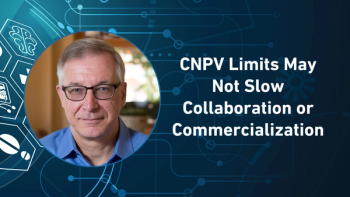
- Pharmaceutical Commerce - April 2009
Ranks of e-prescribers jumped 105% in 2008
Federal- and state-level attention drove technology adoption
Prescriptions routed electronically more than doubled to 68 million in 2008, rising from 29 million in 2007. And the increased participation by payers in e-prescribing enabled access to prescription benefit and history information for 65% of patients in the U.S, according to the newly released
One factor that influenced the growth of e-prescribing, the company says, was attention at the federal and state policy level. National programs drove e-prescribing and provided tools for use by such key players as payers (pharmacy benefit management and Medicaid plans) and pharmacies. Doctors receive an incentive for e-prescribing for Medicare patients. Each player
The result: more than 100,000 prescribers are now routing prescriptions electronically in the U.S, says SureScripts. And the use of three critical components of e-prescribing—electronic prescription benefit, history, and routing—jumped 61% in the first quarter of 2009, resulting in more than 134 million e-prescribing messages being exchanged among prescribers, payers, and pharmacies.
Among other report findings:
- By the end of 2008, there were 74,000 active prescribers (vs. 36,000 for 2007 and 16,000 for 2006).
- Seven states are connected to the SureScripts network through their pharmacy benefit managers to deliver prescription information for fee-for-service Medicaid patients.
- At the end of 2008, approximately 76% of community pharmacies and six of the largest mail-order pharmacies in the U.S. were connected for prescription routing.
Healthcare IT provider Allscripts (Chicago) announced separately that it had routed more electronic prescriptions over the SureScripts network than any other e-prescribing or electronic health record solution provider.
“Electronic prescribing is an easy first step for physicians to move towards an electronic health record, and a logical place to start because of the huge cost—in dollars and human lives—of our current system of handwritten prescriptions,” says Stephen Klasko, MD, MBA, Chief Executive Officer of USF Health and Dean of the University of South Florida College of Medicine, in an announcement.
The SureScripts network connects prescribers in all 50 states to over 50,000 independent and chain pharmacies and the nation's leading payers, providing secure electronic access to prescription benefit and history information and the ability to route prescriptions electronically.
“In the past two years, the U.S. has gone from 19,000 to 103,000 prescribers routing prescriptions electronically, punctuated by 39% sequential growth in prescriber adoption in the first quarter of this year,” says Harry Totonis, president and CEO of SureScripts, in an announcement. “The past two years have also witnessed a sevenfold increase in the use of e-prescribing. And while this growth shows clear evidence that the steps taken by policymakers, prescribers, payers, pharmacies, and others are having a positive impact, swift and specific action is required for the U.S. to achieve mainstream adoption and use of e-prescribing.”
The nationwide effort to replace paper prescriptions with e-prescribing is far from over, says SureScripts: despite the growth, only about 10% of eligible prescriptions are now routed electronically.
Articles in this issue
over 16 years ago
Returns Process Proves Presence of Counterfeits in US Supply Chainover 16 years ago
ClearOrbit Rolls Up More Supply Chain IT Processesover 16 years ago
Automating the Business-Development Processover 16 years ago
SAP and Teradata Partner on Data Warehousingover 16 years ago
Supply Chain Planning Takes on An International Flavorover 16 years ago
Global Pharma Sales Growth Will Flatten to 2.5-3.5% in 2009over 16 years ago
Riding the Biotech Financing Rollercoasterover 16 years ago
Rx-to-OTC Switch Market Will Double Its Recent Growth Rateover 16 years ago
Drug Wholesalers and the Generic Price WarNewsletter
Stay ahead in the life sciences industry with Pharmaceutical Commerce, the latest news, trends, and strategies in drug distribution, commercialization, and market access.





